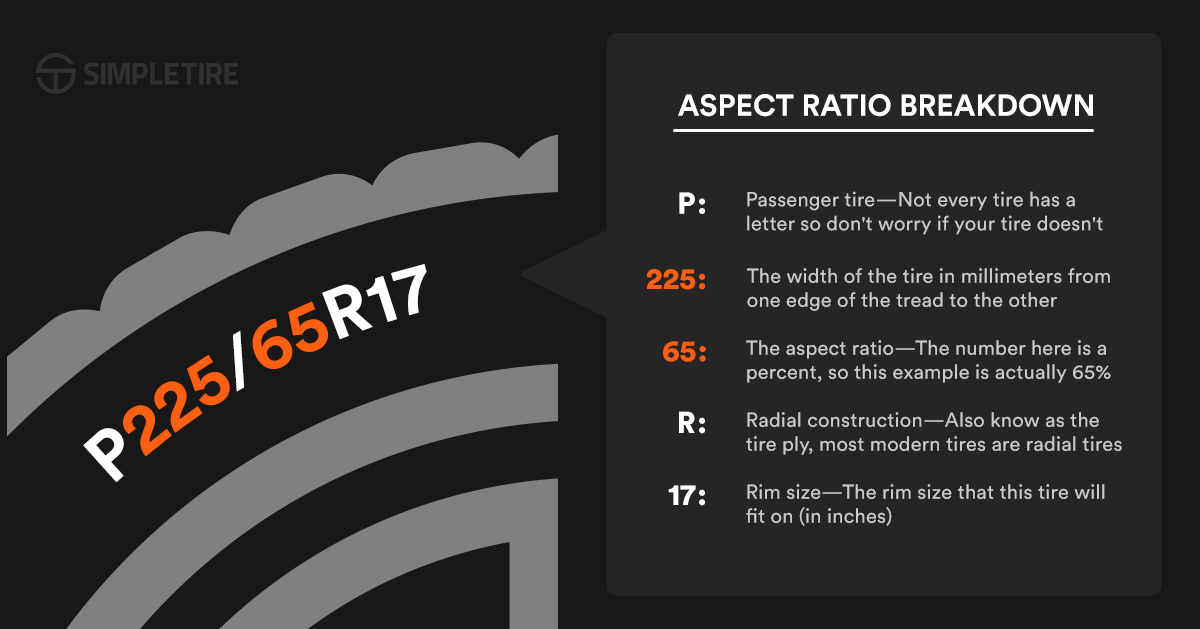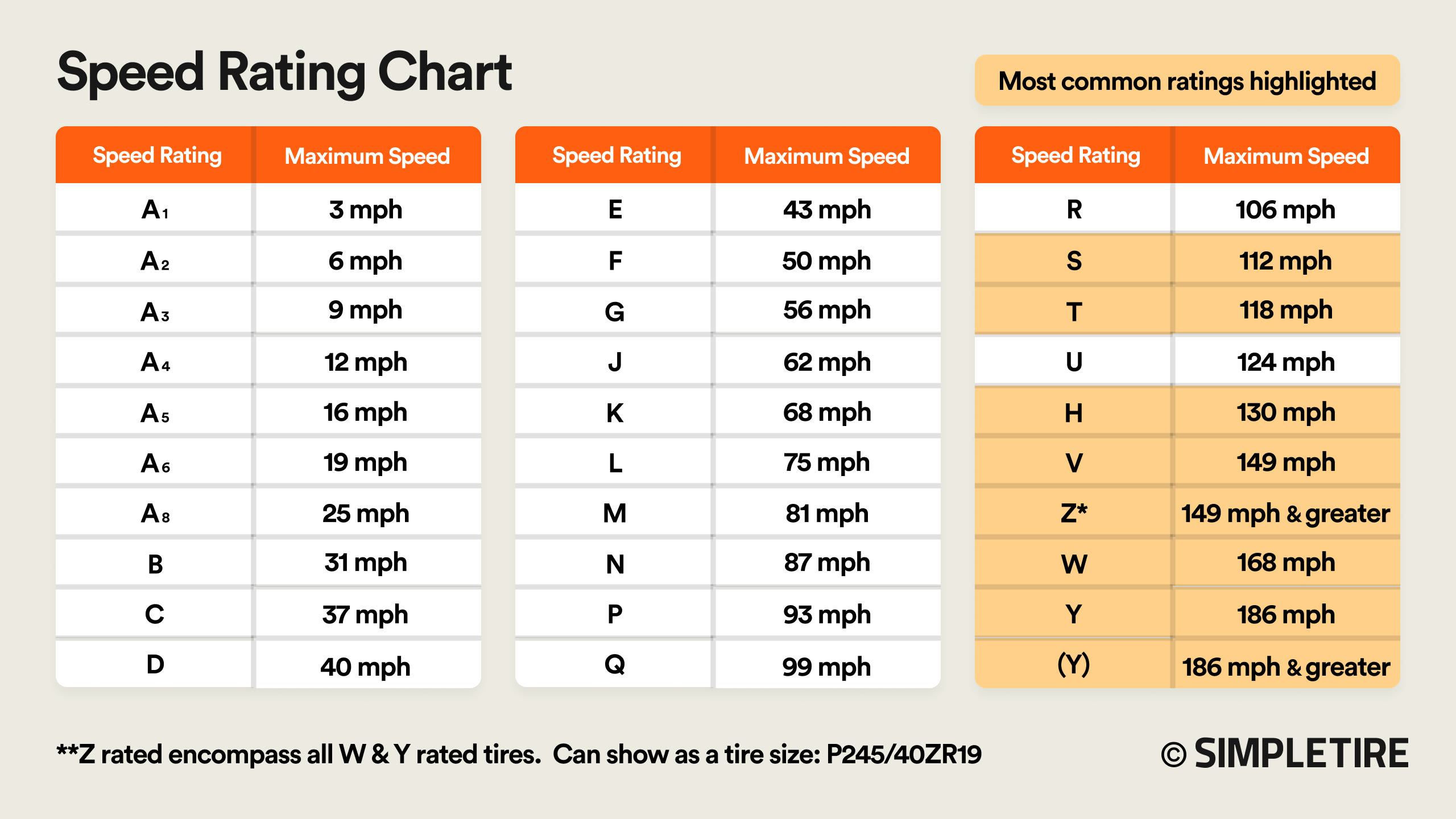Tire Buying Guides
Free shipping
Best price guarantee
Special pricing
Financing with Resolve
Easy returns

Every tire on your vehicle carries a detailed set of codes and numbers that reveal its capabilities and limitations. These markings serve as a universal language that helps drivers select appropriate replacement tires and understand their vehicle's performance boundaries.
The sidewall of a tire contains essential information about load capacity, speed ratings, and size specifications that directly impact your vehicle's safety and handling. Without proper knowledge of these ratings, drivers risk purchasing incompatible tires that could compromise their vehicle's performance or even create dangerous driving conditions.
Learning to decode tire ratings empowers car owners to make informed decisions when replacement time arrives. This knowledge ensures you select tires that match your vehicle's requirements while meeting your specific driving needs and budget constraints.
What is a Tire Rating?
Tire ratings are standardized codes molded into the sidewall of every tire that communicate critical performance specifications and safety limits. These alphanumeric markings form a comprehensive system that tells you everything from the tire's dimensions and construction type to its maximum load capacity and top safe operating speed. The rating system, developed by tire industry organizations and regulated by government agencies, ensures consistency across all tire manufacturers and helps consumers compare products accurately.
The most prominent ratings include:
- Tire Size Code: A combination like P215/65R15 that specifies the tire's physical dimensions and construction
- Load Index: A numerical value indicating the maximum weight each tire can safely support
- Speed Rating: A letter designation showing the highest speed at which the tire can operate safely
- UTQG Ratings: Uniform Tire Quality Grading for treadwear, traction, and temperature resistance
- DOT Code: Department of Transportation identification number, including manufactured date
Beyond these primary ratings, tires also display additional markings such as M+S for mud and snow capability, the three-peak mountain snowflake symbol for severe snow conditions, and maximum inflation pressure specifications. Understanding this comprehensive rating system helps drivers select tires that match their vehicle's original equipment specifications while accommodating their specific driving patterns and regional weather conditions. Each rating plays a vital role in determining whether a particular tire will deliver the performance, safety, and longevity you expect from your investment.
How to Read Tire Ratings
The sidewall of a tire serves as a detailed guide, providing essential information that helps you choose the right tires for your vehicle. Each code has a specific meaning and ensures your tires align with your vehicle's requirements and driving needs.
Step 1: Tire Size Meaning
Understanding tire size is crucial for selecting the right tire that fits your vehicle's specifications. The alphanumeric code on the sidewall, such as P215/65R15, provides essential insights into the tire’s characteristics.
Understanding Each Component
- P: This letter identifies the tire as designed for passenger vehicles, including cars and smaller SUVs.
- 215: This figure indicates the width of the tire in millimeters, measured from sidewall to sidewall.
- 65: The aspect ratio represents the sidewall height as a percentage of the tire’s width, affecting handling and ride comfort.
Radial Construction and Wheel Diameter
- R: Denotes radial construction, a common design where layers run radially across the tire, enhancing flexibility and fuel efficiency.
- 15: Specifies the diameter of the wheel in inches, ensuring proper fit and performance.
By fully understanding each part of this code, you can ensure the tires will provide optimal performance and safety for your vehicle. Properly sized tires contribute significantly to handling, comfort, and overall vehicle dynamics.
Step 2: Understanding Load Rating
The load rating is essential for determining the maximum weight each tire can handle safely. This number follows the tire size on the sidewall and is key to maintaining your vehicle's performance.
Decoding the Load Rating
- Numeric Indicator: The load rating is expressed as a two or three-digit number. For instance, a rating of 95 supports up to 1,521 pounds.
- Higher Values: Larger numbers signify a greater capacity, making them suitable for heavier vehicles or increased cargo.
Ensuring Proper Load Capacity
Selecting tires with the right load rating is crucial to avoid overburdening your vehicle:
- Performance: Using tires with an appropriate load rating ensures stability and reduces the risk of tire-related issues.
- Consultation: Check your vehicle’s manual for load specifications to align with the manufacturer's recommendations.
Understanding these ratings helps you make informed decisions, contributing to the longevity and safety of your tires.
Step 3: Deciphering Speed Rating

The speed rating is crucial for understanding the maximum velocity a tire can safely sustain. This letter follows the load rating on the sidewall, ensuring your tires meet your driving needs.
Interpreting Speed Ratings
- Letter Code: Speed ratings appear as letters like S, H, or V, each denoting a specific speed capability.
- Typical Ratings:
- S: Suitable for speeds up to 112 mph, common on standard passenger vehicles.
- V: Designed for up to 149 mph, ideal for higher-performance cars.
Benefits of Correct Speed Ratings
Selecting the proper speed rating enhances overall vehicle performance:
- Safety Assurance: Guarantees that tires can withstand high speeds without losing stability.
- Optimal Performance: Matches your vehicle's design for improved handling and braking efficiency.
Speed Rating Guidelines
Consider these factors when choosing tires:
- Driving Patterns: Ensure the speed rating aligns with your usual driving conditions.
- Vehicle Specifications: Refer to your vehicle’s specifications to confirm the appropriate speed rating.
By understanding speed ratings, you can choose tires that enhance both safety and driving pleasure.
Step 4: Checking Tire Age
Knowing how old your tires are is essential for vehicle safety and performance. Tires naturally wear down over time, which can lead to potential hazards. The DOT code on the tire's sidewall helps you determine its age.
Understanding the DOT Code
- Four-Digit Format: The last four digits signify the production week and year. For instance, 2319 means the tire was made in the 23rd week of 2019.
- Placement: This code is usually located on the sidewall, near other tire specifications.
Why Tire Age Matters
Regular checks on tire age help maintain safety:
- Aging Effects: Materials in tires break down over time, even if not visibly worn.
- Industry Guidelines: It’s generally advised to replace tires every 6 to 10 years.
Maintaining Optimal Safety.
To ensure your vehicle remains safe:
- Routine Checks: Regularly inspect the DOT code to keep track of tire age.
- Seek Expertise: Consult tire professionals if there's any uncertainty about older tires.
Monitoring tire age is crucial for keeping your vehicle in top condition.
Final Thoughts
Mastering tire ratings allows you to confidently choose tires that boost your vehicle's safety and efficiency. Each decoded component offers insight into the impact on driving quality. Keeping a routine check on these details ensures your vehicle performs optimally.
Importance of Regular Maintenance
Maintaining your tires is crucial for extending their service life and ensuring top performance:
- Pressure Monitoring: Frequent checks maintain correct pressure, enhancing fuel economy and control.
- Alignment and Rotation: Regular adjustments ensure even wear, promoting stability.
Strengthening Vehicle Reliability
Understanding tire specifications supports:
- Risk Reduction: Proper tires decrease the likelihood of tire failures.
- Enhanced Control: Correctly chosen tires improve traction and vehicle response.
These insights help you make informed decisions, ensuring your vehicle remains dependable and safe on the road.
Understanding tire ratings transforms what seems like confusing codes into valuable information that helps you make the best choice for your vehicle. With this knowledge, you can now confidently evaluate tire specifications and select the perfect match for your driving needs and safety requirements.
Ready to put your new knowledge to use? Shop for tires online and find the best deals with our extensive selection, where we make finding the right tires for your vehicle simple and affordable.
Ready to find the perfect tires?
Search By